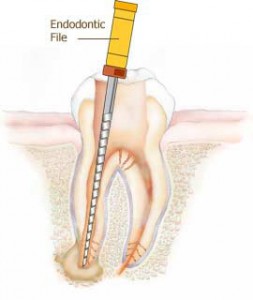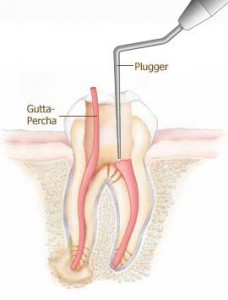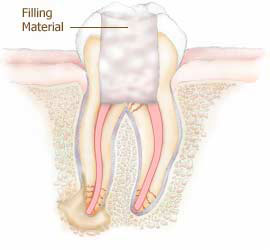Endodontic therapy or root canal therapy is a sequence during which the inflamed or infected pulp is removed and the inside of the tooth is carefully cleaned and disinfected, then filled and sealed with a rubber-like material called gutta-percha. Afterwards, the tooth is restored with a crown or filling for protection.
Advantage of root canal therapy :
1) Efficient chewing
2) Normal biting force and sensation
3) Natural appearance
4) Protects other teeth from excessive wear or strain
Causes for damage tooth:
1) A cracked tooth
2) A deep cavity
3) An injury to a tooth, such as a severe knock to the tooth, either recent or in the past.
STEPS:
1. Deep Infection
Root canal treatment is needed when an injury or a large cavity damages the tooth’s root. The root becomes infected or inflamed.
The dentist numbs the tooth. An opening is made through the crown of the tooth to the pulp chamber.
3. Removing the Infected/Inflamed Tissue
Special files are used to clean the infection and unhealthy pulp out of the canals. Then they shape the canals for the filling material. Irrigation is used to help clean the canals and remove debris.
4. Filling the Canals
The canals are filled with a permanent material. Typically this is done with a material known as gutta-percha. This helps to keep the canals free of infection or contamination.
5. Rebuilding the Tooth
A temporary filling material is placed on top of the gutta-percha to seal the opening. The filling remains until the tooth receives a permanent filling or a crown. A crown, sometimes called a cap, looks like a natural tooth. It is placed over the top of the tooth.
6. Extra Support
In some cases, a post is placed into the root next to the gutta-percha. This gives the crown more support.
7. The Crowning Touch
The crown is cemented into place.







